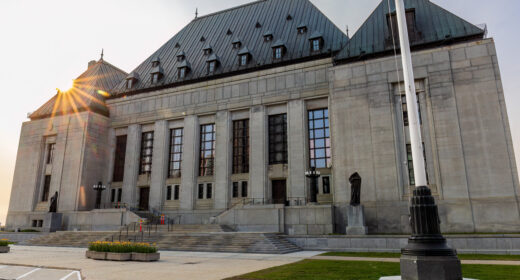Paragraph 73(1)(a) of the Patent Act deems a Canadian patent application to be abandoned if the applicant does not reply in good faith to any requisition made by an examiner during an Office Action. An issued patent could also be retroactively voided by operation of this subsection if and when challenged in a court of law.
A couple of recent Federal Court cases1 had taken this good faith requirement to an unprecedented level, amounting to absolutely liability since "intent" is irrelevant. Such requirement appears to have exceeded the U.S. patent practice, where a patent may only be deemed unenforceable if it is found that the attorney prosecuting the application had the intention to omit the information during prosecution. In the face of these recent court cases, a patent agent's responses (to an Office Action) based on an honest but mistaken belief as to what prior art teaches, appears insufficient today in Canada to satisfy the good faith requirement.
In essence, and without going into the lengthy facts of the cases, the Court in one of the cases equated the prosecution of a patent application with an ex parte court proceeding, where the party before the judge is mandated to make full, frank and fair disclosure of all the facts. In the case that followed, the Court further broadened the duty of good faith in that merely providing the patent examiner an accurate listing of the titles of publications appears to be insufficient. The applicant/agent must not withhold prior art which could be detrimental to the patent claims.
The jury is still out as to whether this extraordinary broad and indeterminate scope of duty to act in good faith will be consistently applied by the courts. For now, in the absence of any appellate rulings, we, as Canadian agents, must be vigilant in satisfying the requirements of paragraph 73(1)(a) of the Act. Translating this into practice, we recommend the following:
- If a prior art is cited by an examiner, the applicant needs to fairly and fully discuss the cited art in addressing the examiner's rejections. In addition, the applicant should inform the examiner other relevant prior art and discuss them in a full, frank and fair manner, including those ones that may be detrimental to the claimed invention. Applicant must be careful not to mislead the examiner of the interpretation of the prior art.
- Extra caution must be exercised when characterizing the prior art. Avoid broad and unspecific language such as "the prior art as a whole would not have rendered the claimed invention obvious". Instead, adopt very specific statements, such as referring to the particular portion of the cited prior art to lay out detailed reasons as to why the prior art is or is not applicable to patentability of the invention.
- If a similar claim rejection was made in a corresponding foreign application, it is important to maintain consistency of the arguments made between the applications in rebutting the examiner's rejection.
- If the Canadian examiner issues a "Rule 29" requisition in the Office Action, which requires the applicant to provide information and status of corresponding foreign filing(s) and prior art citations, therein (typically the information and status of the corresponding US and European patent applications, if any, are requested by the requisition), information and status of the corresponding application(s) in the requested jurisdiction(s) and a list of prior art cited therein is likely sufficient – so long as the issue of anticipation or obviousness is not also being brought up elsewhere in the Office Action by the Canadian examiner.
- Though there is no positive duty to provide the Canadian Patent Office with an Information Disclosure Statement ("IDS"), it is strongly recommended to submit an IDS at the time or shortly after Request for Examination of the Canadian application is made.
In conclusion, judicial interpretation on the doctrine of good faith and paragraph 73(1)(a) by recent cases have imposed a broad yet indeterminate duty on the applicant and its agent to demonstrate good faith in prosecuting a Canadian patent application. Moving forward, our firm will continue to subscribe to the practices outlined above which has been our on-going practice all along.
Should you have any questions, please do not hesitate to contact us.
1 GD Searle & Co v. Novopharm Limited, [2007] F.C.J. No. 120 (F.T.D.); revd on other grounds [2007] F.C.J. No. 625 (F.C.A.) Lundbeck Canada Inc. et al. v. Ratiopharm Inc., [2009] F.C.J. No. 1466 (F.T.D.)


